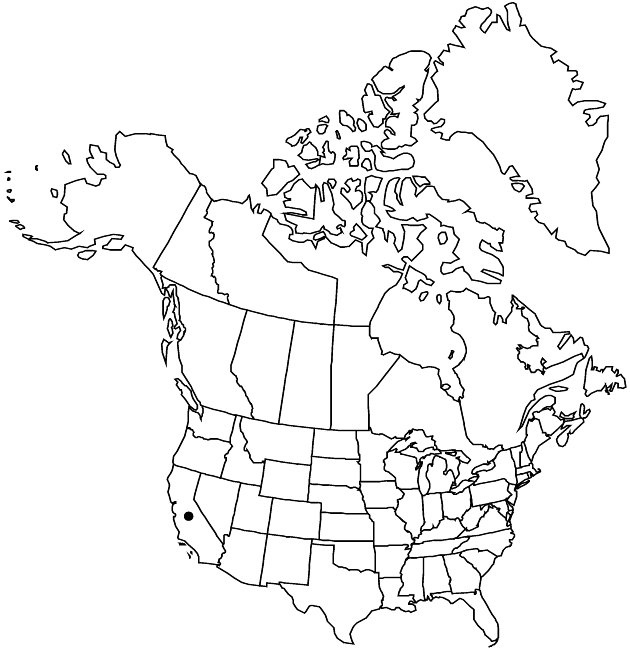Deinandra minthornii
Novon 9: 469. 1999.
Subshrubs or shrubs, 15–100 cm. Stems ± solid. Leaves: proximal blades pinnatifid to toothed, faces ± hirtellous, sometimes stipitate-glandular. Heads borne singly or in loose, racemiform or racemiform-paniculiform arrays. Bracts subtending heads usually overlapping proximal 0–1/2 of each involucre. Phyllaries ± evenly stipitate-glandular, including margins and apices, often with some non-glandular, non-pustule-based hairs as well. Paleae in 3+ series or throughout receptacles. Ray florets (4–)8; laminae deep yellow, 5.5–6.5 mm. Disc florets 18–23, all or mostly functionally staminate; anthers yellow or brownish. Pappi of 8–12 linear to lance-linear, entire or fringed scales 1–3 mm. 2n = 24.
Phenology: Flowering Jun–Nov.
Habitat: In chaparral, coastal scrub, often in sandstone crevices
Elevation: 200–800 m
Discussion
Of conservation concern.
Deinandra minthornii occurs in the western Transverse Ranges (Santa Monica Mountains and Santa Susana Mountains). It is in the Center for Plant Conservation’s National Collection of Endangered Plants.
Selected References
None.
